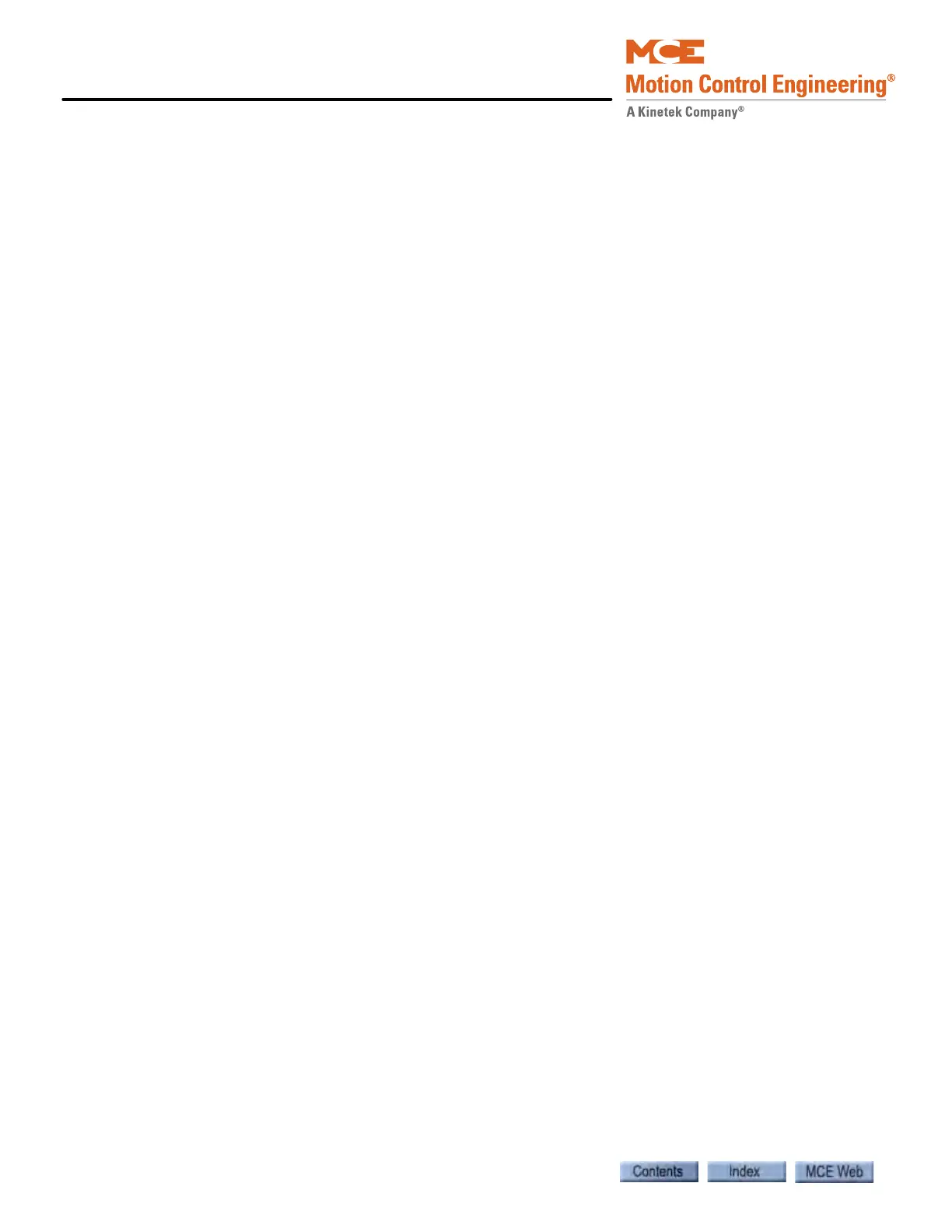iView - Controller View
9-106 Manual # 42-02-7223
PID - Start (normal) Enabled/Disabled by the Start Gain (normal) Options selection.
These parameters are used to control rollback.
• Proportional: If there is no rollback, set to equal Standard Proportional. If there is roll-
back, set to a greater value than Standard Proportional. Start Proportional Error gradually
decreases to Standard Proportional Error over the time period determined by the Transi-
tion Time setting below.
• Integral: If there is no rollback, set to equal Standard Integral. If there is rollback, set to a
greater value than Standard Integral. Start Integral Error gradually decreases to Standard
Integral Error over the time period determined by the Transition Time setting below.
• Differential: Usually set to 0.0. If there is no rollback set to equal Standard Differential. If
there is rollback, set to a greater value than Standard Differential. Start Differential Error
gradually decreases to Standard Differential Error over the time period determined by the
Transition Time setting below.
• Transition Time: Determines the transition time from Start (Normal) to Standard gain set-
tings as described above. Usually set to 0.25 seconds.
PID - Stop (normal) Enabled/Disabled by the Stop Gain (normal) Options selection.
• Integral: If elevator spots while approaching floor, increasing Stop Integral may help.
PID - Steady-State (normal) Enabled/Disabled by the Steady-State Gain Options
selection. These parameters are used to reduce gains to correct oscillation that occurs at steady
state speed but not during acceleration and deceleration.
• Proportional: Should be equal to or less than Standard Proportional Error. Applied after
steady speed is attained and Transition Delay time has expired. Standard Proportional
Error reduces to Steady-State Proportional Error during the time selected by the Transi-
tion Time setting below. When the car begins to slow down, Steady-State Proportional
Error will increase to Standard Proportional Error over one half of the Transition Time
setting below.
• Integral: Should be equal to or less than Standard Integral Error. Applied after steady
speed is attained and Transition Delay time has expired. Standard Integral Error reduces
to Steady-State Integral Error over the time selected by the Transition Time setting below.
When the car begins to slow down, Steady-State Integral Error will increase to Standard
Integral Error over one half of the Transition Time setting below.
• Differential: Should be equal to or less than Standard Differential Error. Applied after
steady speed is attained and Transition Delay time has expired. Standard Differential
error reduces to Steady-State Differential Error over the time selected by the Transition
Time setting below. When the car begins to slow down, Steady-State Differential Error
increases to Standard Differential Error over one half of the Transition Time setting below.
• Transition Delay: The delay after achieving steady speed before Steady-State gain is
applied. Increase this setting when speed overshoot occurs to allow speed to stabilize.
• Transition Time: Normally set from 0.50 to 1.0 seconds. Determines the transition time
to/from Standard settings to Steady-State settings as described above.
